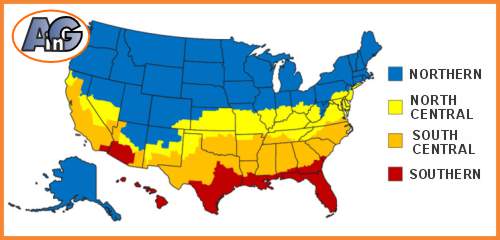Written by John Wakefield – Owner of Artistry in Glass
The Energy Star label is your friend when purchasing double-pane windows, It shows certified performance values for U-factor, Solar Heat Gain, Visible Light Transmittance, Air Leakage, and Condensation Resistance. But what exactly do these numbers mean and how do you use them to choose replacement windows for your home?
Find out in this comprehensive post from the window experts at Artistry in Glass.

The Energy Star label is your guarantee – if the labels are not on the glass when your dealer comes to install them – you should reject the windows.
What is the Energy Star Label?
ENERGY STAR® (administered by the EPA) is the government-backed symbol for energy efficiency.
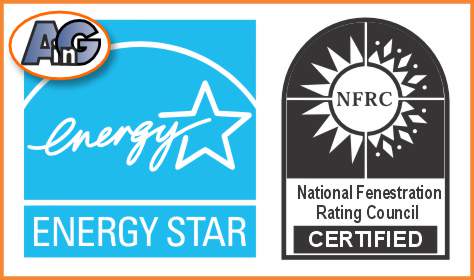
ENERGY STAR® partners with the National Fenestration Rating Council (NFRC) to provide a guaranteed energy efficiency description that is placed as a label on all new windows.
What is on the Energy Star/NFRC Label?
The complete label (below left) normally starts with the Energy Star climate map for the USA at the top:
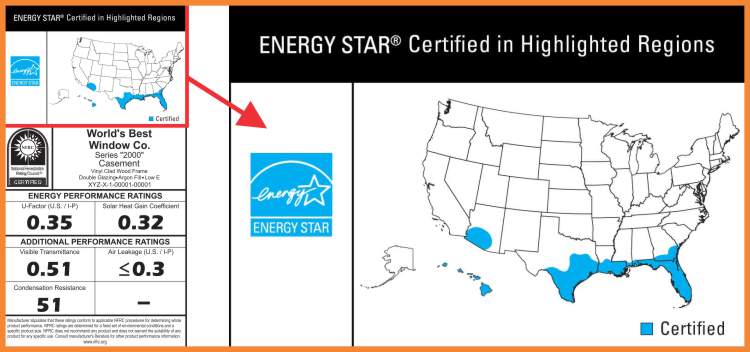
Figuring out your climate zone is the key to choosing the optimum properties of your double-pane window – so if this map is not included on the label you will have to look it up online.
Many windows carry only the simpler label NFRC (below):
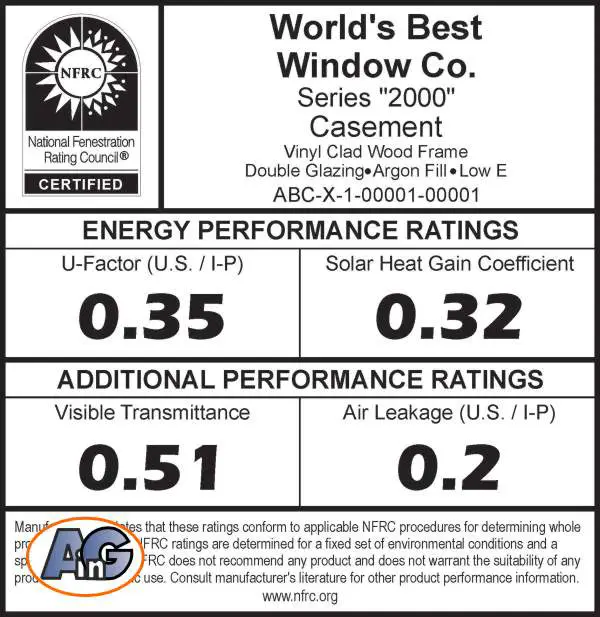
This NFRC (National Fenestration Rating Council) label shows ratings for U-factor, Solar Heat Gain, Visible Light Transmittance, and Air Leakage. Some labels also include Condensation Resistance.
Explanation of the Label
The NFCR sticker includes everything you need to know about your window, First, at the top right, is a title box with the window description comprising:
- Manufacturers name
- Certified model name
- Frame Description (vinyl/wood etc)
- Glazing description (double/triple, argon-filled, Low E, etc.)
- NFRC CPD (Certified Product Directory) number
Below the title, are “ENERGY PERFORMANCE RATINGS” with the following important metrics
- U-Factor – insulation value
- Solar Heat Gain Coefficient (SHGC)
- Visible Transmission
- Air Leakage
- Condensation Resistance (not on every label)
Continue reading to learn all about these parameters
As an Amazon Associate, I earn from qualifying purchases
Jump to this section for an inexpensive way to reduce solar heat
Save money on contractors by installing your own replacement windows
Are replacement windows worth the investment?
Use the knowledge you gain from this post to figure out the best double-pane replacement windows for your home. After this – you will be able to figure out whether they are worth the investment.
Find out all about the economics of replacement windows in this post from Artistry in Glass.
Window Description (Title Box)
In addition to the maker and model number, the title box tells you about the frame (vinyl, wood, aluminum, etc.) and the glass (double pane, argon fill, Low E. In particular, note that all energy-efficient windows should be at least double-paned, with at least one lite of Low E glass and with argon fill. Learn all about argon filling and Low E glass in these posts.
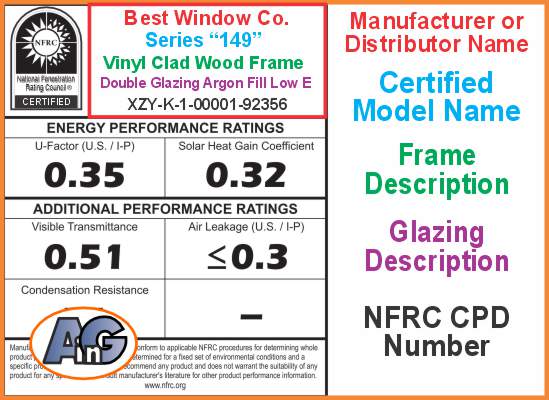
This title box information is your guarantee that the window contains the components essential for energy efficiency. For Southern climate zones; this means double paned, with argon fill, Low E, and vinyl frame. Learn all about the science behind argon-filling in this post from Artistry in Glass.
U-Factor (U)
The U-Factor measures the thermal insulation efficiency of the glass – that is – it measures the amount of heat that is conducted across the window.
The following five factors affect the U-value of a window.
- The glazing material (glass, plastic, treated glass)
- The number of layers of glass (double or triple)
- The size of the air space between the layers of glass
- The “fill” of the space (Air, Argon or Krypton)
- The thermal resistance or conductance of the frame and spacer materials
- The “tightness” of the installation (air leakage)
The most important contribution is the filling of the “air” space and argon-fill has now become the most widely used and popular.
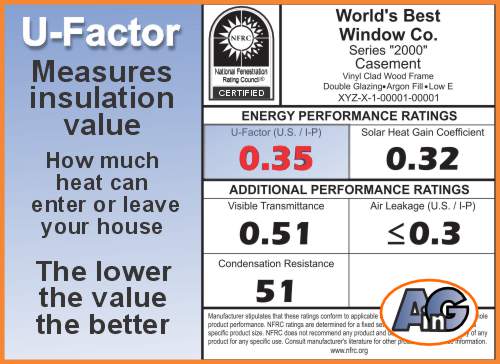
U-value is especially important in very cold climates because of the large temperature gradient between interior and exterior (often >70 degrees F in a Minnesota winter)
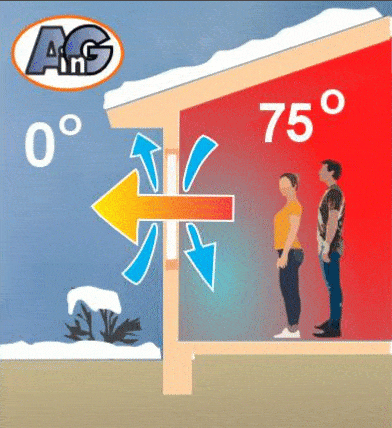
In the Southern climate zone, insulation is mainly useful to prevent hot summer heat from entering your air-conditioned home.

Note that the temperature difference is less than in frigid Northern climates – so the U value is less critical.
Comparing cold and hot climates
To emphasize the importance of conductive heat flow, compare the situation in cold and hot climates:
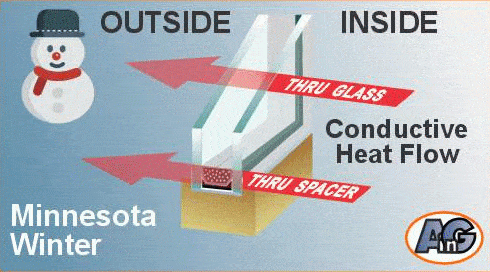
In frigid Minnesota winters, we want to keep heat in the house whereas in hot Arizona summers, we want to keep the hot air out of the house.
For engineers
Note that the U-value is the inverse of the “R-value” (normally used for measuring the insulation value of materials like walls and doors.
Solar Heat Gain Coefficient (SHGC)
The SHGC denotes the glass’s capacity to deflect solar radiation, thereby maintaining optimal indoor temperatures and preserving furniture from fading.
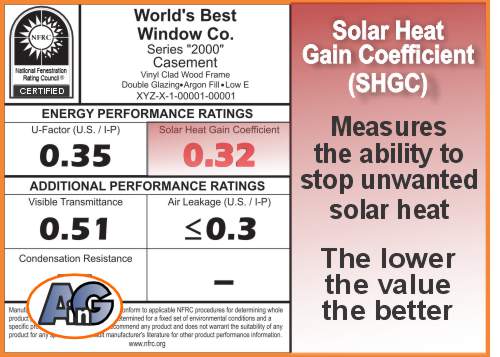
In detail, this is done by Low-E-coatings or Low-emissivity coatings – thin coatings that are put on one or more glass surfaces to prevent or limit certain wavelengths (infrared and ultraviolet) from passing through the pane while still allowing the passage of visible light. These coatings reflect ultraviolet or infrared light to increase the insulating performance of the glass leading to increased energy efficiency while still maintaining the appeal of a clear window.
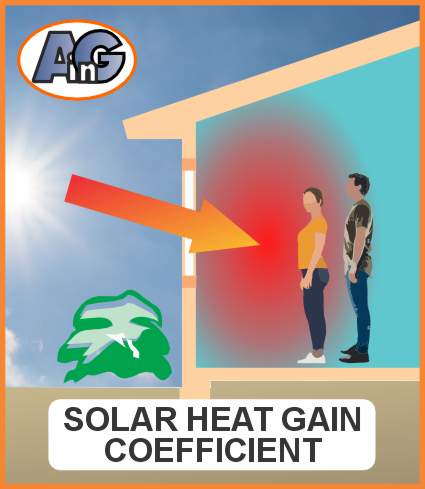
For Northern zones, choose a SHGC value around 0.3 to 0.4 – allowing some heat from the winter sun to warm the house.
Windows in very hot climates should have lower values < 0.25 to reduce the effects of the summer sun.
Save installation costs by doing it yourself
A large proportion of the price of replacement windows is the cost of installation. Frugal and handy customers can install their own double-pane glass – order cut-to-size IG units from Amazon.
Visible Transmittance (VT)
The VT value corresponds to the degree of visibility through the window. A high VT is preferable because most people want plenty of natural light in their homes.

Keeping solar heat out with Low-E coatings can create a green tint and reduce the VT – so, in Southern Arizona, the homeowner has the choice between visibility and heat gain.

A good compromise for Southern Arizona is less than 0.25 for SHDC and less than 0.40 for U-Factor. This results in a VT of around 0.50.
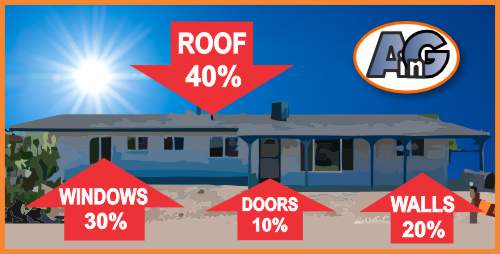
Air Leakage (infiltration)
Heat loss and gain can occur by infiltration through cracks in the window assembly – this is called Air Leakage (AL) and can take place through a poorly constructed frame and because of bad installation into the house.
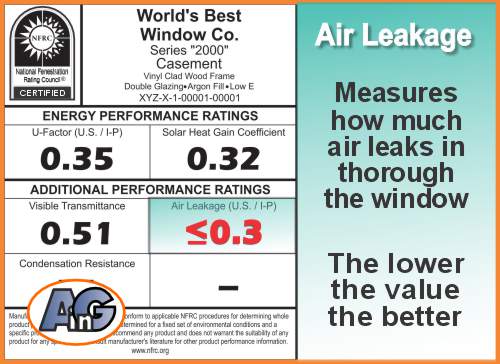
AL is the volume of external air (in cubic feet/minute) permeating into a home. High values correspond to noticeable drafts, leading to discomfort and escalated heating expenses. The industry standard for AI is 0.30 CFM, equivalent to 24 cans of soda’s worth of air infiltration per minute.
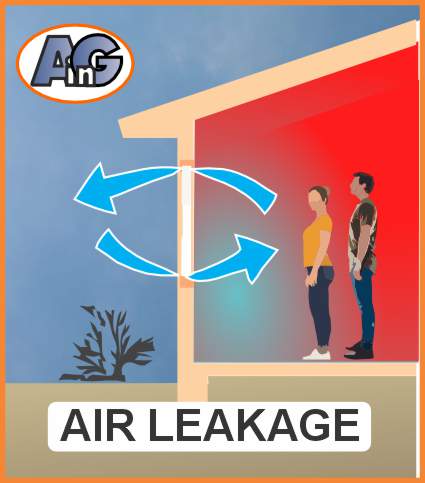
Conventional residential double-hung windows crafted from wood by brands like Pella, Marvin, Jeld-Wen, and Andersen have a CFM of 0.23 (equivalent to 18.4 cans of soda). High-performance double-hung vinyl windows by Alside, Simonton, and Champion drop the AI ratings down to 0.15 CFM.
Remember, even outdated windows can be made more draft-resistance by weather-stripping and caulking.
Condensation Resistance (CR)
CR is not included on every label – so don’t worry if you don’t see this figure on yours. A window with a low U-Factor (say < 0.28) will automatically have a high condensation resistance.
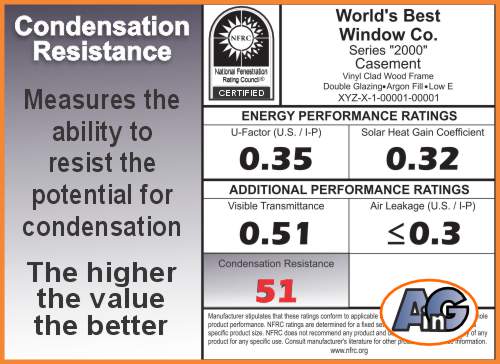
Condensation Resistance is most important when the temperature difference between the inside and outside of the house is very large (for example states like Minnesota).
Activities like cooking, boiling, and tea-making elevate humidity – making windows with a higher CR rating a highly desirable option for kitchens and bathrooms.
Numbers are expressed between 1 and 100. Anything under 50 is unacceptable; 50 to 60 is good; 60 or more is very good.

If left unchecked, surface moisture on the glass can damage the wooden frame and even cause the growth of dangerous mold.
Bubble insulation – saves on replacement windows
If money is an issue, frugal homeowners can cut the heat from problem windows with inexpensive bubble insulation – available from Amazon through the link below:
These reflective insulation sheets are made of double-sided aluminum foil and bubble, The surface circle design improves reflectivity, sun protection, and heat insulation – keeping your room cool in summer and warm in winter.
The importance of the Energy Star/NFRC label
As an informed and savvy customer – you should study and become familiar with the various glass specifications on the NFRC label. This will help you make smart choices and optimize your spending on replacement windows.
For example, the optimum window type for South- and West-facing windows will not be the same as those for North-facing windows.
Future posts by Artistry in Glass will explain everything you need to know about buying replacement windows for your home.
Learn all about energy-efficient windows in these posts:
- What is Low-E Glass & how can it reduce your utility bills?
- How do argon-filled windows save on energy bills?
- Are replacement windows worth the investment?
- Understanding the Labels on Your Double-Pane Glass Windows
- Is Upgrading to Triple-Pane Windows Cost-Effective?
- The Ultimate Window Frame Material Challenge – which is best?

